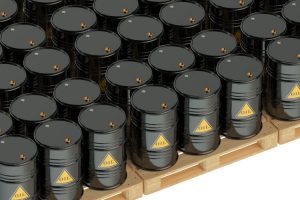Rangeland Energy Begins Operations at its South Texas Energy Products System (STEPS) Terminal Facility in Corpus Christi, Texas
SUGAR LAND, Texas
Rangeland Energy III, LLC (“Rangeland”) today announced that operations commenced at its STEPS terminal in Corpus Christi, Texas, on Monday, June 4. Rangeland also announced that in June the company will begin loading diesel onto railcars for a leading refined products customer. The diesel will be delivered to third-party inland terminals in Mexico via the Kansas City Southern Railway(NYSE: KSU).
“Rangeland is looking forward to facilitating the transportation of diesel to destinations in Mexico for a major industry player,” said Rangeland President and CEO Christopher W. Keene. “This is the first customer to contract with us for services at the STEPS facility. As we continue to build out the STEPS project, we are working with other key marketers, refiners and producers to provide services into and out of STEPS.”
About STEPS
STEPS is an integrated hydrocarbon logistics system that receives and stores refined products, liquefied petroleum gas (“LPG”) and other hydrocarbons at a new terminal hub located in Corpus Christi, Texas, and transports them to terminals primarily located in Mexico. During the initial phase of the project, refined products and LPGs will be received in the Corpus Christi terminal then shipped to third-party inland terminals located in Mexico. In subsequent phases, marine facilities in Corpus Christi and Mexico will be added to the system, along with the infrastructure to accommodate additional commodities including crude oil, condensate and fuel oil. The STEPS project expands upon and leverages Rangeland’s successful track record of developing similar infrastructure in the Bakken Shale and Permian Basin.
The terminal site in Corpus Christi is strategically situated along the Kansas City Southern Railroad mainline within five miles of the Port of Corpus Christi and the Valero, CITGO and Flint Hills refineries. Inbound products initially will be delivered by truck or rail, followed later by pipeline and barge. Refined products and LPGs will move out of the STEPS Corpus Terminal primarily by rail, but the terminal could eventually connect to pipelines and vessels.
About Rangeland Energy
Headquartered in Sugar Land, Texas, Rangeland Energy was formed in 2009 to focus on developing, acquiring, owning and operating midstream infrastructure for crude oil, natural gas, natural gas liquids and other petroleum products. The company is focused on emerging hydrocarbon production areas across North America, with a current emphasis on the Gulf Coast and Canada. The Rangeland team represents more than 200 years of combined midstream experience and is backed by an equity commitment from EnCap Flatrock Midstream. Visit www.rangelandenergy.com for more information.


